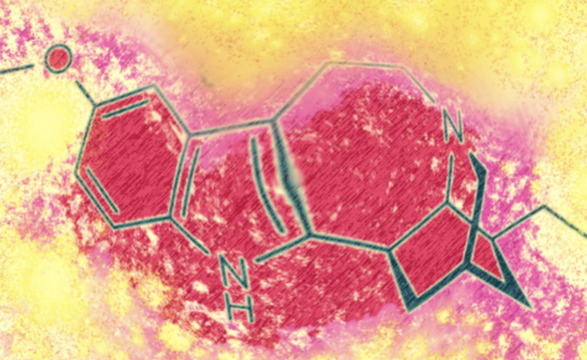This is how we can design a more sustainable digital economy

Photo by veeterzy on Unsplash
The COVID-19 pandemic has underscored just how interconnected our world is.
As the virus has spread, we have seen how none of us are immune, and how we need to work together to build and deploy solutions such as treatments and vaccines.
We need to fight climate change with this same level of cooperation and commitment. Because while COVID will pass, the problems facing our environment are only getting worse. We’ve seen extreme weather events and fires rage across the American West, the Australian bush and Brazil’s rainforests. We’ve seen temperatures hit new highs and the amount of sea ice sink to new lows.
It’s up to us, as business leaders, to reimagine the way we do business and find new ways to tackle climate change. We each have arenas where we spend our time, whether that’s finance, retail or healthcare. We need to examine those arenas and build coalitions that can make us more effective.
My arena is the digital economy. Throughout my career I’ve worked to build digital products that solve important challenges and have a material benefit to people’s lives. As the climate crisis looms larger, it’s become even more important to think about the social and environmental impact of this work. What I’ve learned is that in order to truly make a difference, businesses need to invest in partnerships, inspire consumers to be part of the solution, and embed sustainability into the fabric of their business.
Investing in partnerships
Partnerships are critical to governments and businesses in meeting their ambitious climate goals, and we must all step up to help solve these major global challenges together. In the US, for instance, the majority of people believe that their government is not doing enough to combat climate change, so going into a new administration, we have a chance to form public-private partnerships to supercharge each other’s efforts.
From a corporate point of view, many businesses want to take action but are paralyzed by the enormity of the challenge, or fear of doing it the wrong way. The reality – the biggest risk comes from doing nothing at all.
When we formed the Priceless Planet Coalition, we unlocked the power of our global network and brought together more than 40 of the biggest names in finance and commerce, to take action to restore 100 million trees in five years – supporting the World Economic Forum’s one trillion trees platform, 1t.org. This coalition calls for each of us to avoid pursuing a fragmented, sub-scale approach, but instead bundle our efforts to deliver a bold, sustained, long-term commitment with the greatest possible impact.
We have also brought on board climate-science advisors and forest restoration partners Conservation International and the World Resources Institute, to ensure our work is done in a science-driven way that creates maximum benefit for the planet. These experts guide our decisions about where and how to plant, and provide context on social issues and biodiversity. By providing a solid infrastructure, we can empower coalition partners to seamlessly plug in their initiatives and do what they do best – leverage their core business capabilities to engage and activate their consumers for this important cause.
Engaging consumers
We will not reach our climate change goals without encouraging citizens to participate. Fortunately, gone are the days when supporting the environment was left to a niche group of progressives – increasingly, people want to support brands that have sustainability at the core of their values. Two-thirds of adults across 28 countries say they have made changes to their consumer behaviour out of concern for the climate.
Our economy and people will only thrive when our planet does too.
—Jorn Lambert
This is especially true of Generation Z, the young people who are poised to become a market force in the coming years. Two-thirds of this group say they prefer to buy from sustainable brands and nearly three-quarters say they are willing to pay more for sustainable products.
The biggest challenge, however, is that people don’t know where to start. The easier we can make it for them to participate, the better chance we have of making those sustainable behaviours stick.
As a payments company, we also want to use our technology to enlist people in combating climate change. This means educating consumers about the carbon footprint of their purchases (which we’re already scaling this with the fintech startup Doconomy) – so that they can make more mindful spending choices. It also means making it easy and safe for people to donate– or even use rewards points – to contribute to reforestation efforts while counterbalancing other spending. Ultimately, we are looking at all of our consumer touchpoints so that we can enable people to think differently about what they’re paying for.
Embed sustainability into the fabric of business
In the middle of a pandemic, you might expect companies to be so focused on just getting through this moment that all other priorities fall to the wayside, but that’s not what we’ve seen. Those who have joined the Priceless Planet Coalition did so because they know we can’t afford to wait and they want sustainability to be a key part of everything they do. While sustainability has often been the remit of Corporate Social Responsibility (CSR) teams, many now realize that to continue delivering impact it needs to become an integral part of the fabric of the company’s business.
That will look different depending on the company. Within our coalition, each member has the flexibility to take a unique approach to engaging consumers and encouraging tree planting – aligning with both their sustainability and business goals. What we provide is the framework and infrastructure for partners so that efforts aren’t fragmented, but instead united and underpinned by science. But it’s key that every company build sustainability in ways that are authentic and core to their own businesses. Some might focus on customer acquisition – planting a new tree or making a donation for anyone who opts for a card made from sustainable materials. Others will incentivize more sustainable behaviours in realms they can best influence – from going paperless or encouraging bike-sharing.
As leaders, we must act today to create lasting, exponential impact to our planet. That’s what I value so much about coalitions that bring together partners across a range of disciplines and industries. We can take the best ideas of each member and proliferate them across an expanding network that touches billions of consumers. We will only make change if we work at this together. Our economy and people will only thrive when our planet does too.
Reprinted with permission of the World Economic Forum. Read the original article.





